Understanding Cancer in Young Adults: Causes, Risks & Healthy Living
VerifiedAdded on 2023/06/15
|5
|1053
|122
Essay
AI Summary
This essay examines the prevalence, predisposing factors, and potential prevention strategies related to cancer in young adults. It highlights that approximately 70,000 young individuals in the United States are affected by cancer annually, with specific types like leukemia, lymphoma, thyroid, and testicular cancers being more common in the 15-24 age group, while breast cancer and melanoma are prevalent among those aged 25-39. The essay delves into the complex pathophysiology of cancer, attributing it primarily to genetic mutations within DNA that lead to abnormal cell proliferation. It identifies factors such as smoking, radiation exposure, carcinogenic agents, hormones, HPV infection, gastrointestinal reflux, and chronic inflammation as potential contributors to gene mutation. The essay also touches upon the role of DNA repair genes and inherited clinical conditions in cancer development, emphasizing the importance of lifestyle choices like avoiding smoking, maintaining a healthy diet, and practicing safe sex to mitigate cancer risks. Furthermore, it suggests genetic testing for individuals with a family history of cancer to identify any inherent mutations and recommends avoiding harmful radiations and chemical fumes.
1 out of 5
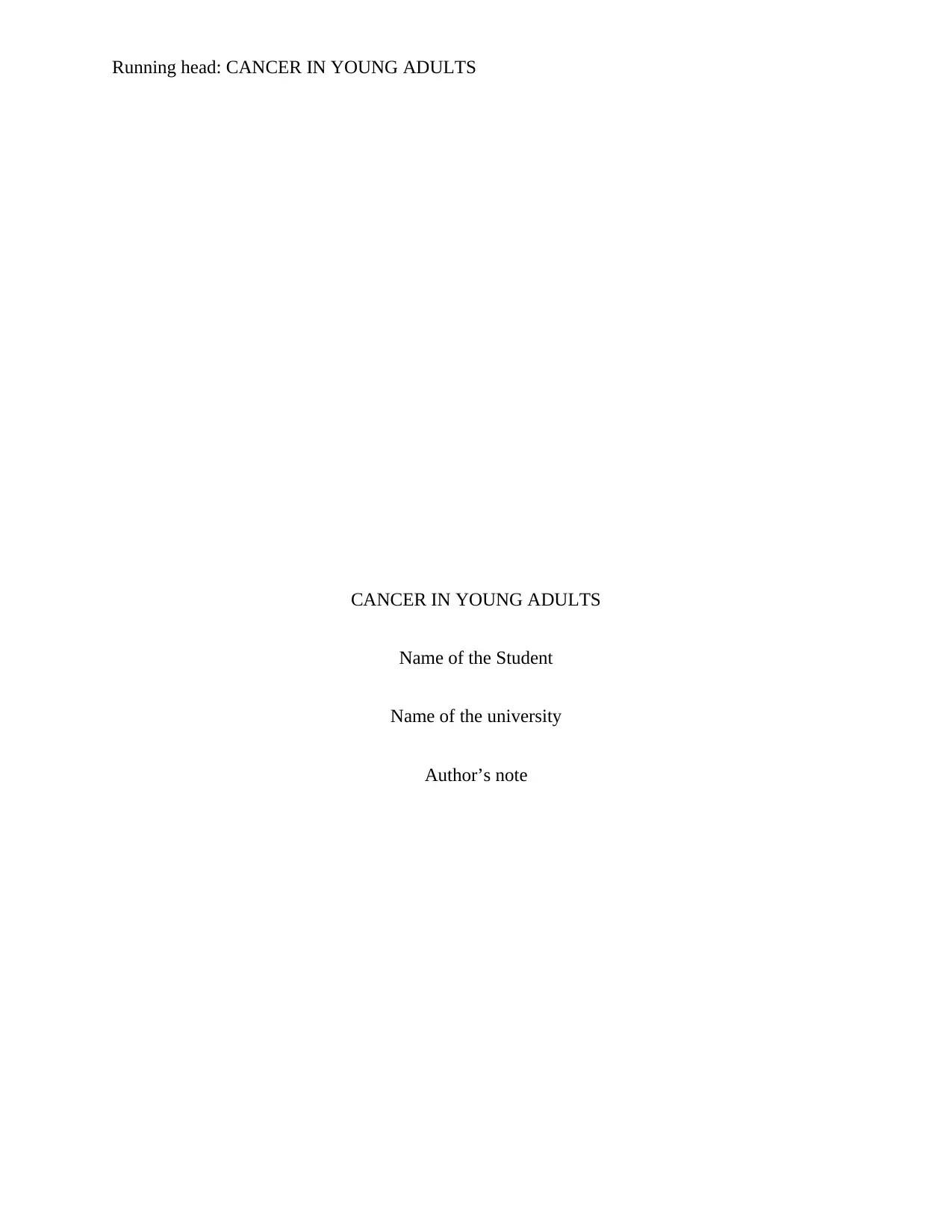
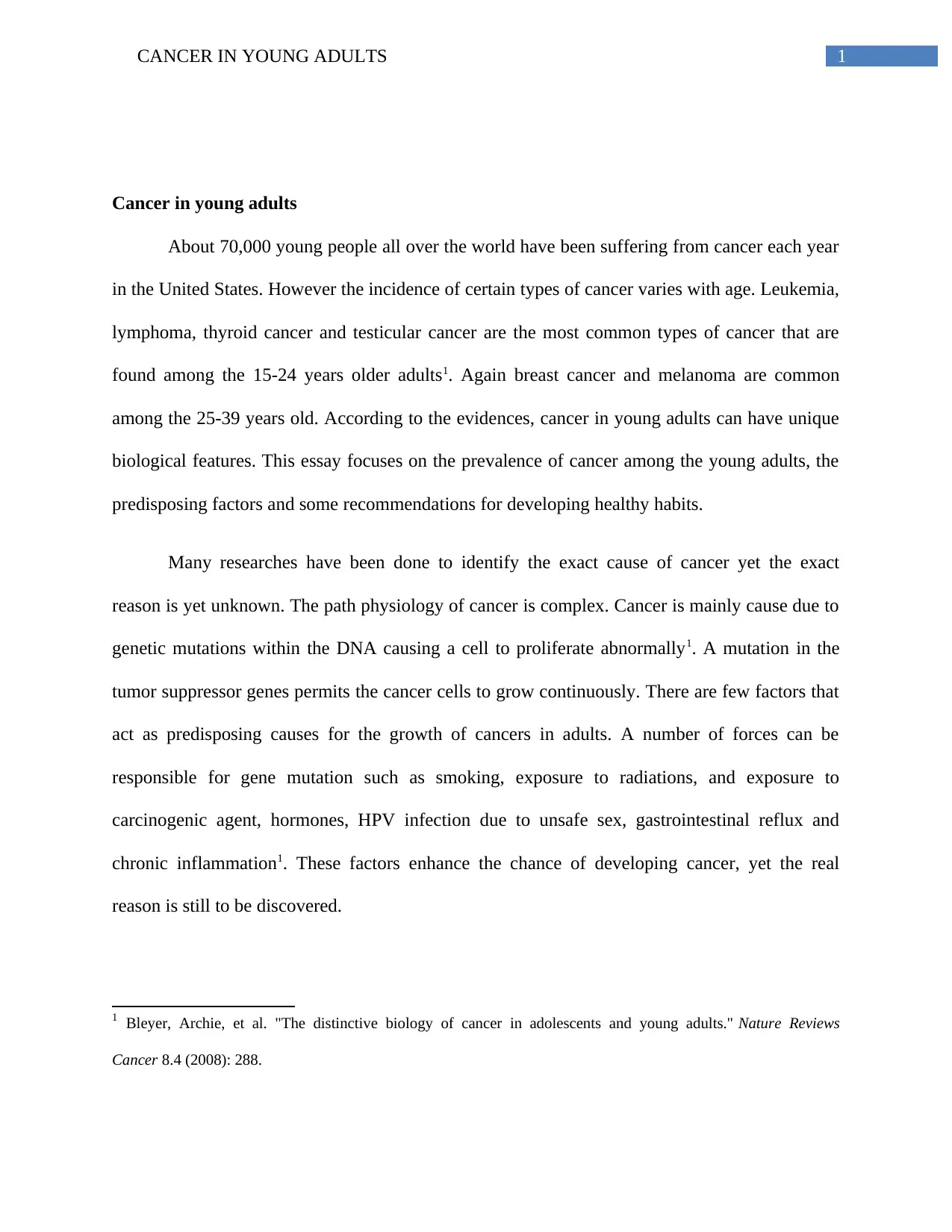
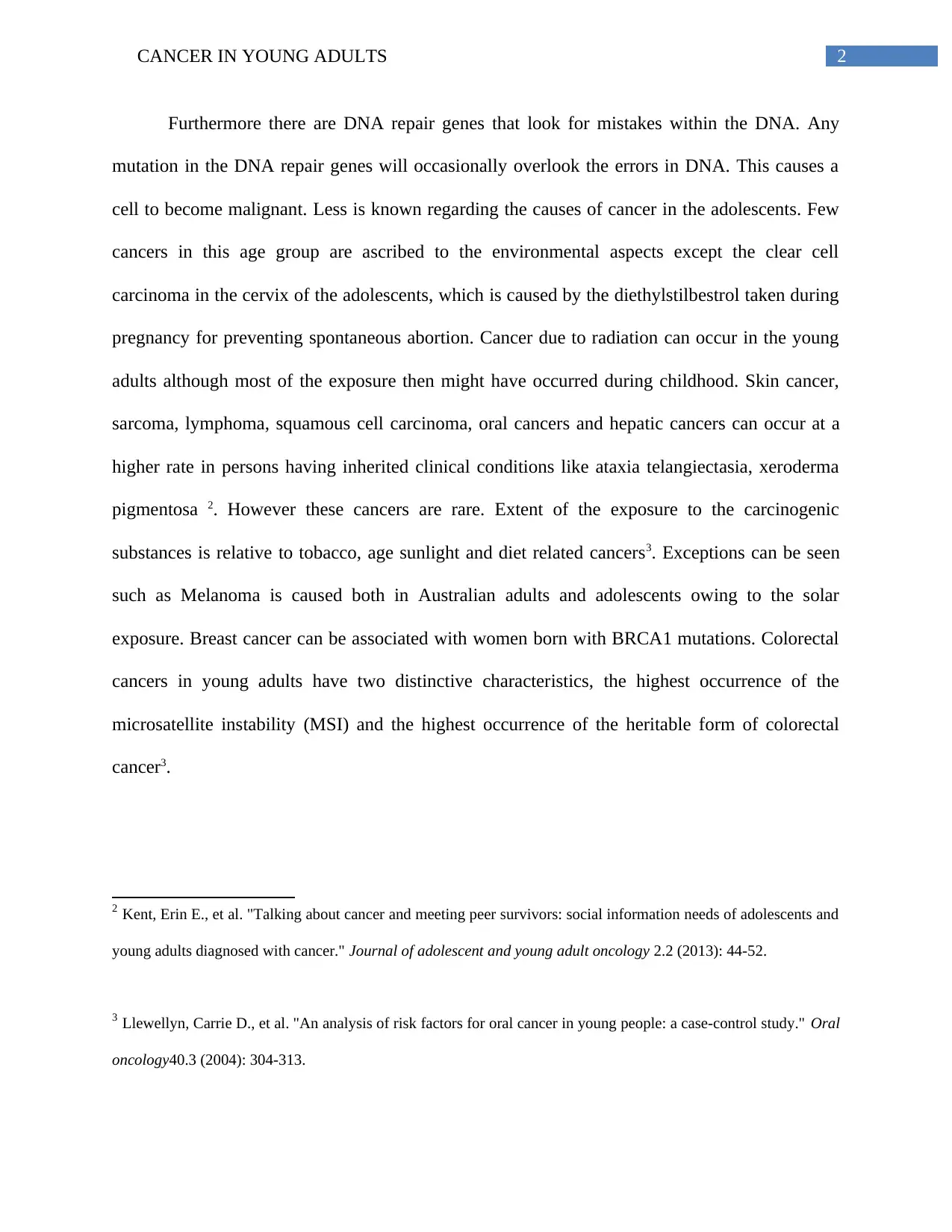

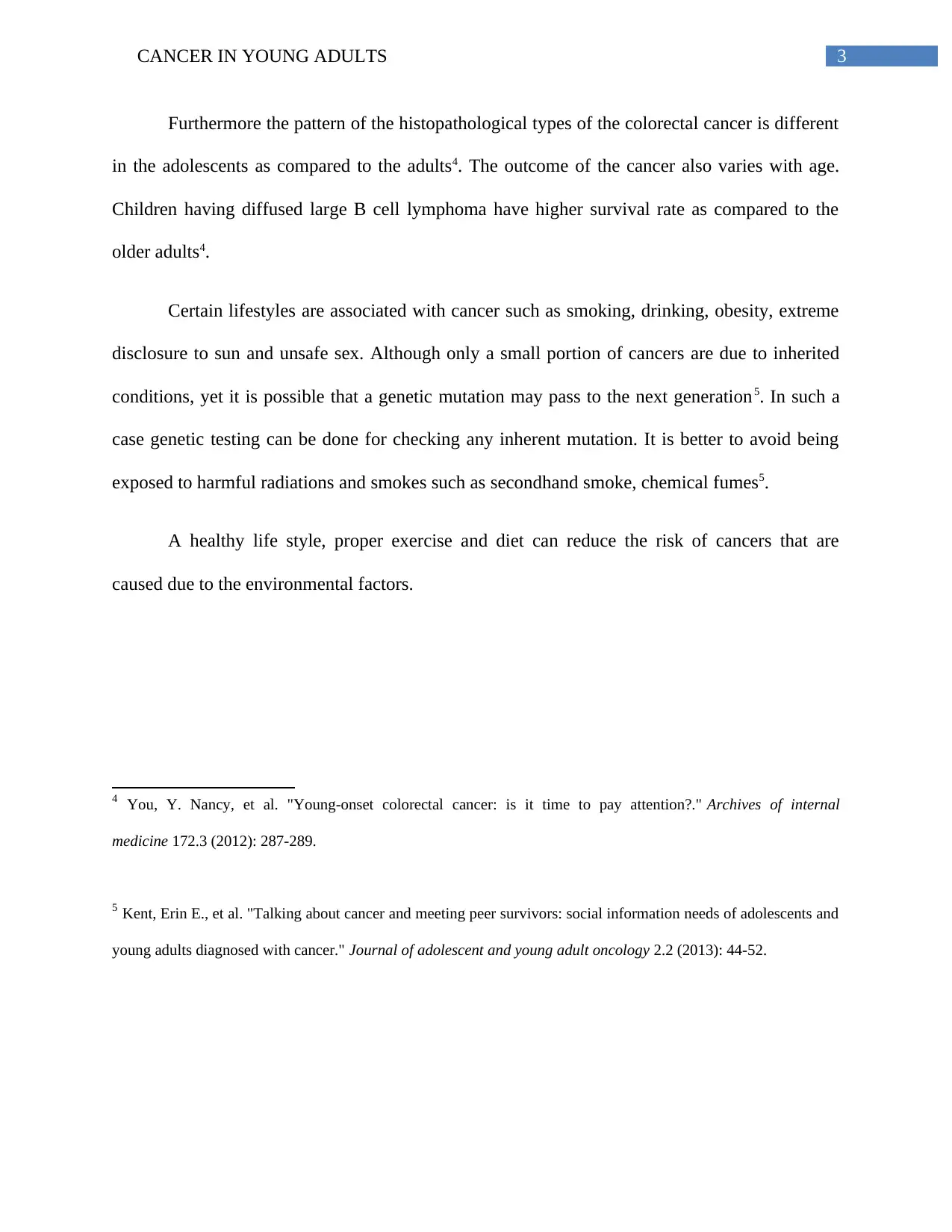
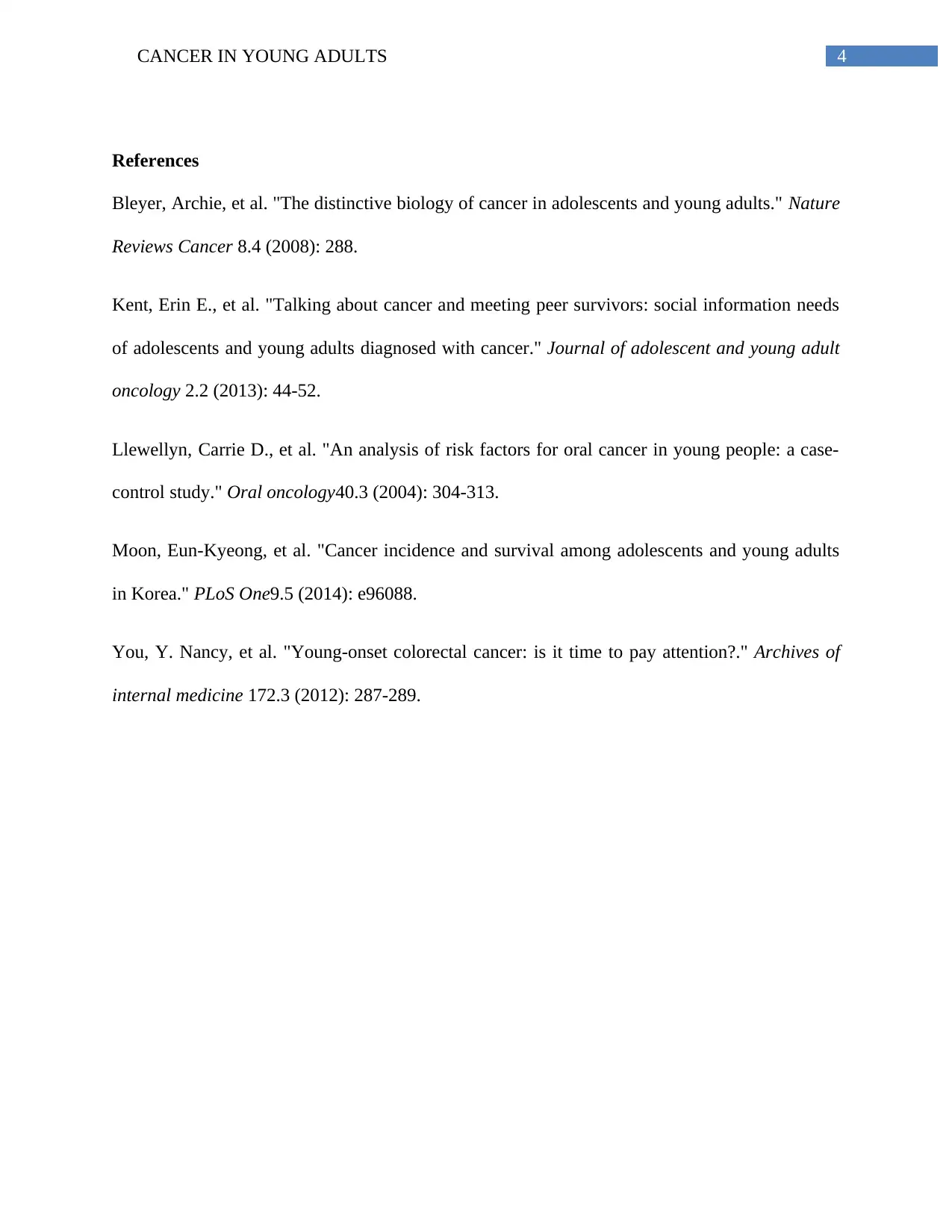




![[object Object]](/_next/static/media/star-bottom.7253800d.svg)